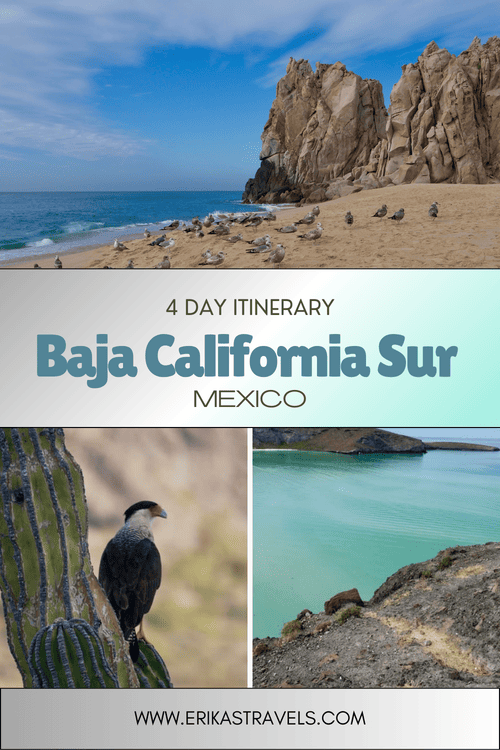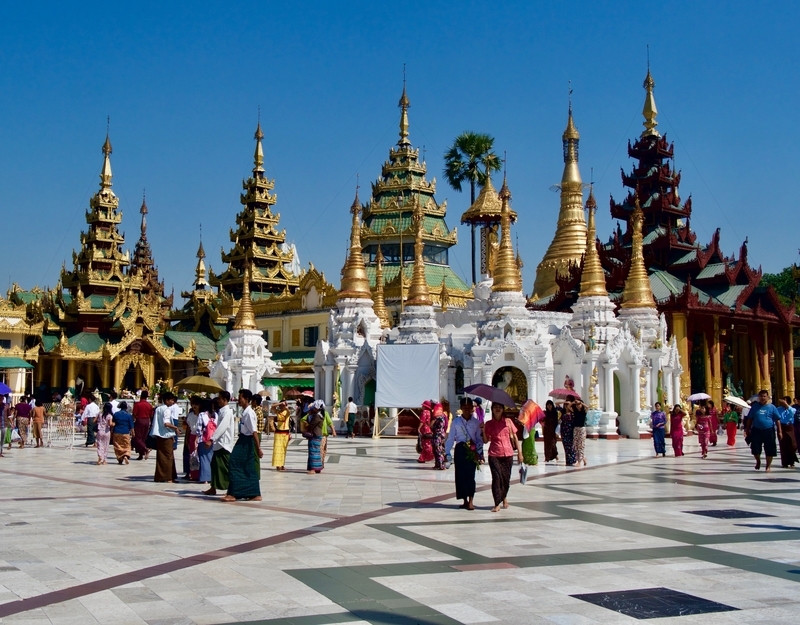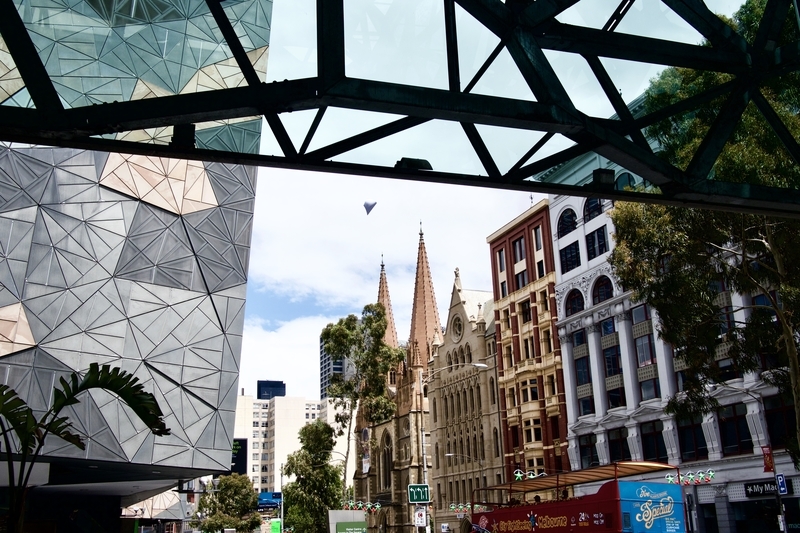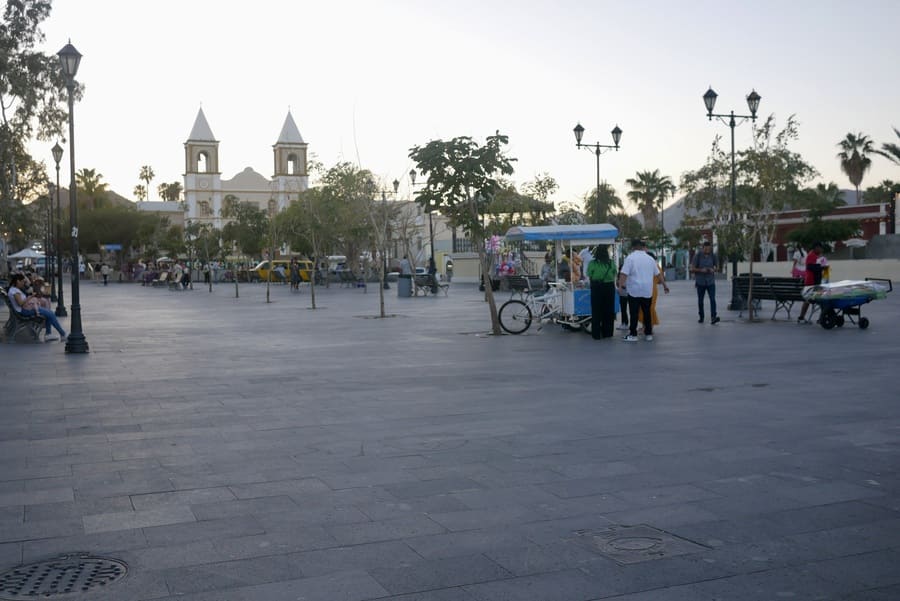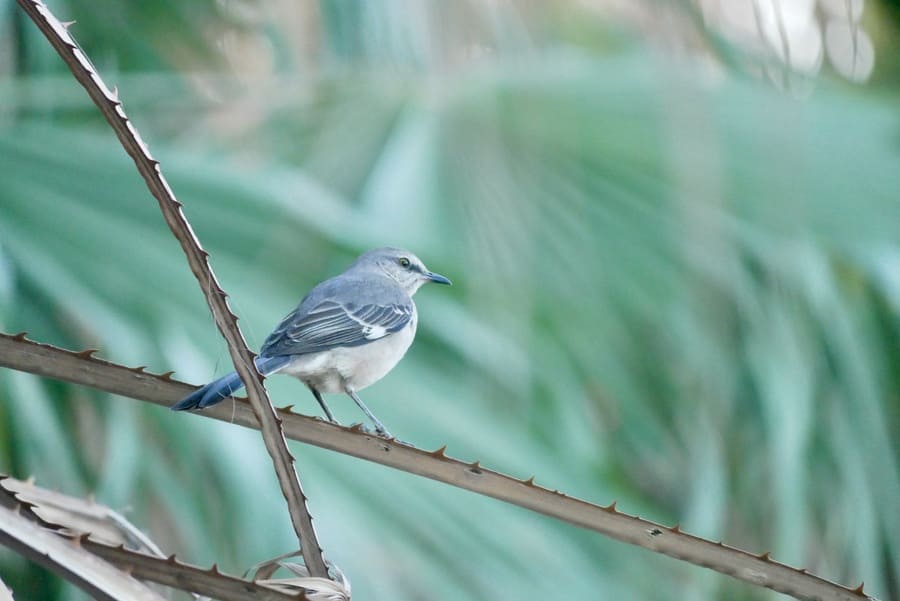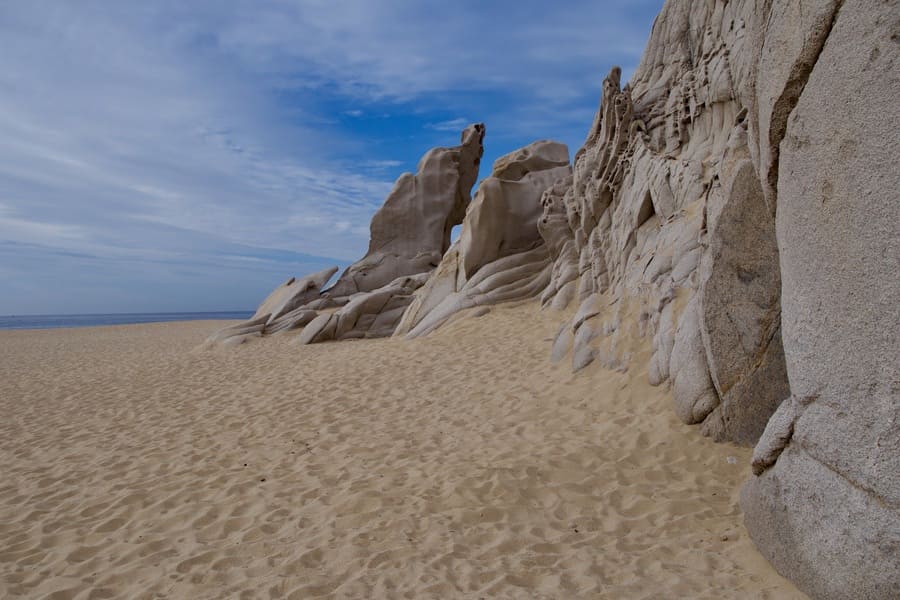
How to Spend 4 Days in Baja California Sur
Baja California Sur, often called “Baja Sur,” is a sun-drenched peninsula extending from Mexico’s western coast like a wayward thumb. This narrow Mexican state occupies the southern half of the Baja California Peninsula. It is renowned for its breathtaking landscapes, where the desert meets the sea.
From the cactus-studded Sierra de la Laguna mountains to the crystal-clear waters of the Sea of Cortez, the region boasts stunning scenery, colorful Pueblos Mágicos, windswept beaches, and secluded bays.
Four Day Itinerary for Baja California Sur
I’ve visited Baja California on two separate trips, each focusing on the southern tip of the peninsula. The first trip consisted of a weekend in Cabo San Lucas with Dan’s family, while the second was a relaxing getaway in San José del Cabo with some friends from college.
On both occasions, we rented a car and left the resort areas in search of Baja’s lively cities and natural wonders.
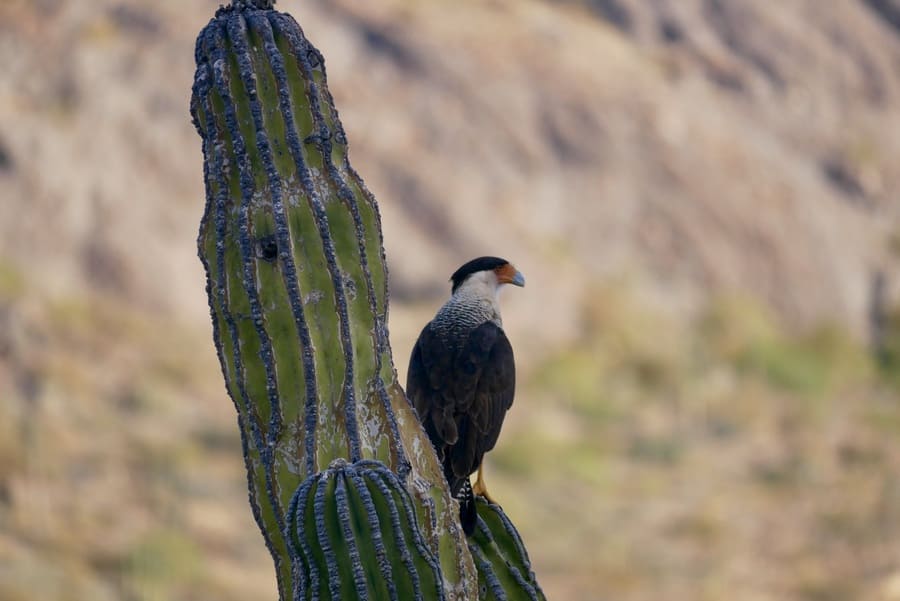
When exploring new destinations, we prefer a mix of leisure and sightseeing. This four-day Baja Sur itinerary reflects that balance—showcasing both the region’s cultural highlights and scenic natural areas.
Day 1: Cabo San Lucas
Once a sleepy fishing village, Cabo San Lucas is now a booming resort town known for its all-inclusive accommodations, its raging parties and its stunning natural beauty. Located at the very southernmost tip of the peninsula, Cabo is a destination that attracts both luxury vacationers and rowdy spring breakers.
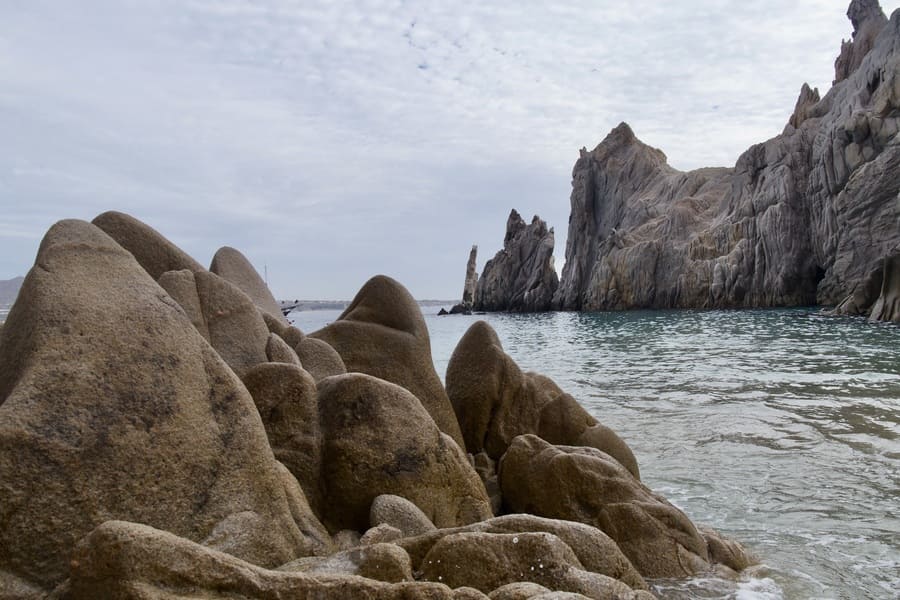
In general, Dan and I tend to avoid heavily commercialized destinations.
However, beyond the Americanized resorts and overpriced margaritas, Cabo has a wealth of places to explore.
-
Lover’s Beach and Divorce Beach
Lover’s Beach and the adjacent Divorce Beach are picturesque stretches of sand nestled between the dramatic granite rock formations of Land’s End. Lover’s Beach, on the calmer Sea of Cortez side, features crystal-clear waters perfect for swimming and snorkeling.
In contrast, Divorce Beach, on the Pacific side, is known for its powerful waves and strikingly different character.
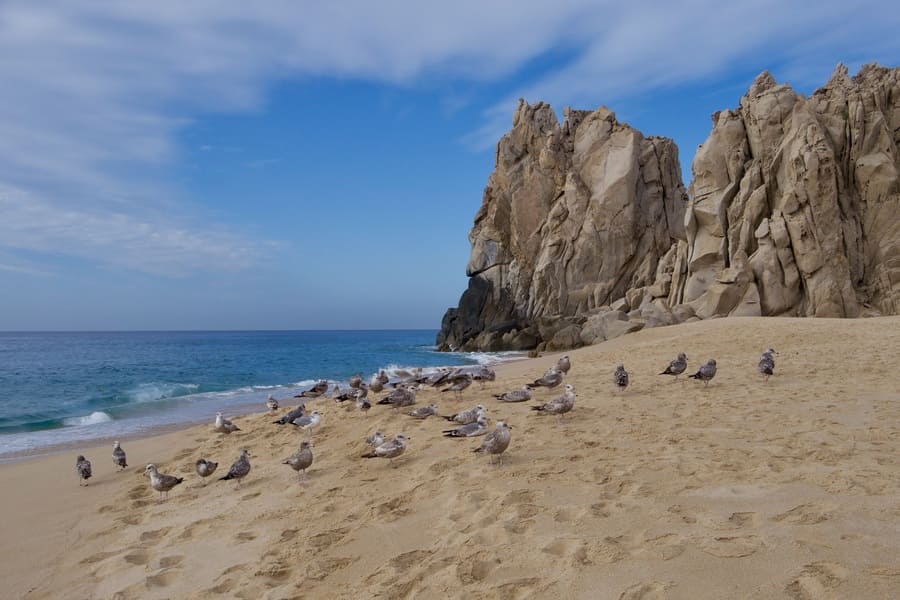
To reach the beaches, you can take a water taxi from Médano Beach or from the Cabo San Lucas Marina.
We visited Lover’s Beach early in the morning via water taxi, enjoying its golden sands in peaceful solitude before the influx of tourists. We admired the towering rock formations, the brilliant blue ocean, and the distant sight of whales spouting water on the horizon.
For a moment, alone on the shore, it was easy to forget we were just minutes away from one of Mexico’s most popular resort towns.
-
Land’s End
Land’s End marks the dramatic meeting point of the Pacific Ocean and the Sea of Cortez. The rugged rock formations here, shaped by centuries of wind and tidal erosion, stand in sharp contrast to the polished waterfront of Cabo’s main beach.
The most iconic landmark at Land’s End is El Arco, a stunning natural rock arch that has become the symbol of Cabo San Lucas.
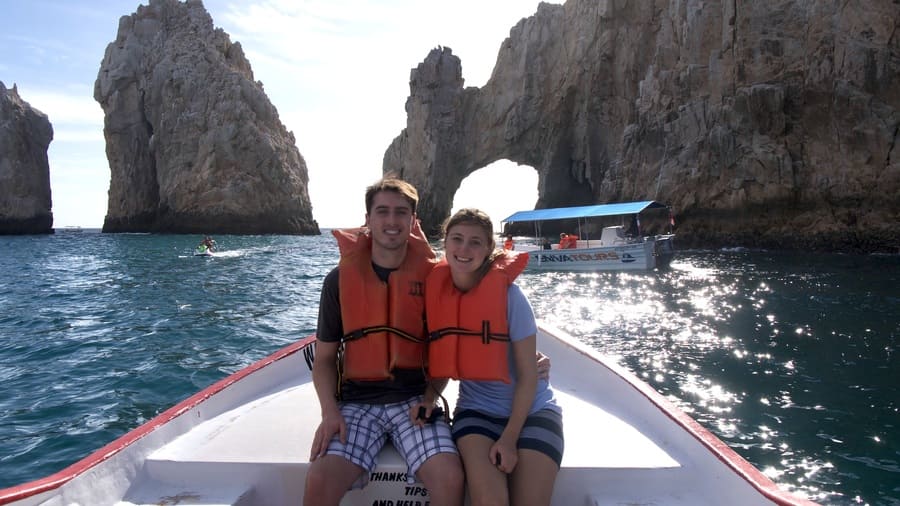
We booked a 45-minute boat tour of Land’s End that took us past sunbathing sea lions, towering rock spires, and the famous sea arch. As we cruised through the area, we kept a lookout for whales.
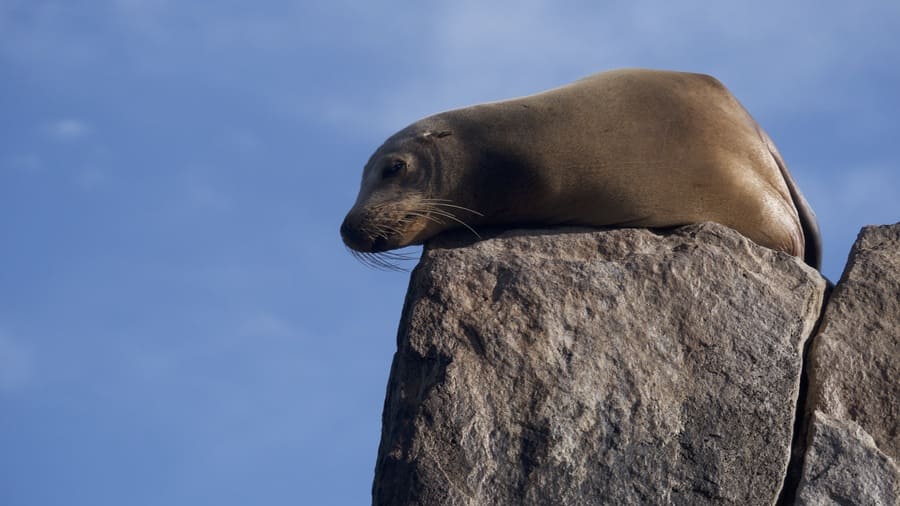
You can either visit the Land’s End formations by kayak, or as part of a motorboat tour.
Boat tours depart from the Cabo San Lucas Marina and provide up-close views of El Arco, rock spires, and sea lion colonies. Some tours include whale-watching, while others provide the opportunity to snorkel.
-
Playa Médano
Playa Médano is a prototypical resort beach filled with sunbathing tourists, eyesore hotels and vendors selling tacky souvenirs, . Every few minutes, we encountered people trying to sell us bracelets, T-shirts, hair braiding, and photo opportunities with sombrero-wearing iguanas.
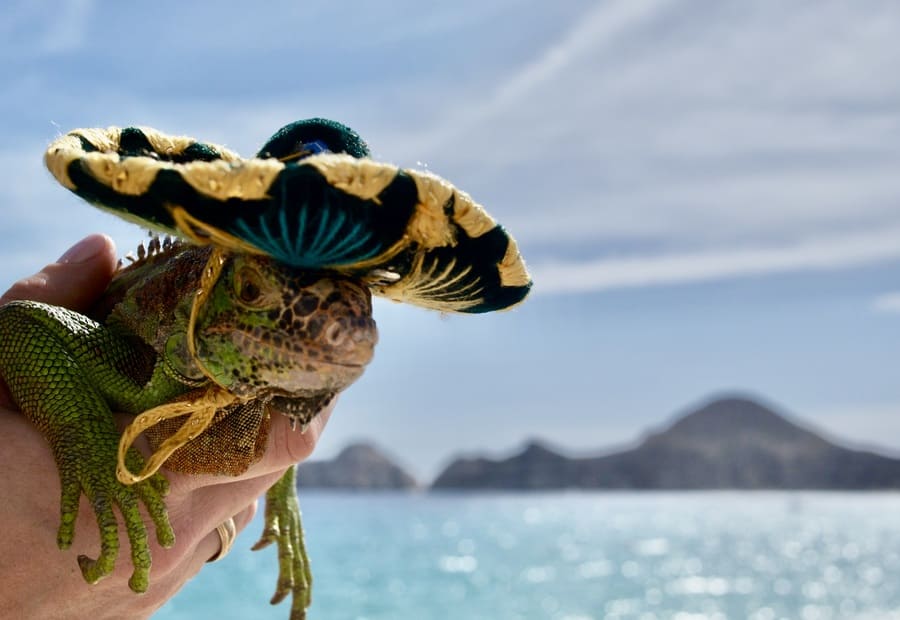
Though we tend to stray away from crowded hotel-lined beaches, we enjoyed cooling off in the water of Playa Médano and soaking up a bit of Vitamin D.
Stretching for over two miles along the Sea of Cortez, the popular beach in Cabo San Lucas has soft golden sand and clean clear water. It is a convenient environment for swimming, beach-lounging and water sports.
Day 2: San José del Cabo
San José del Cabo, located about 40 minutes northeast of Cabo San Lucas, offers a more laid-back and traditional experience compared to its lively neighbor. The town, home to Los Cabos International Airport, is a popular base for exploring the attractions of Baja California Sur.
While farther removed from the iconic attractions at Land’s End, the city showcases a good mix of quaint architecture, sweeping beaches, and wildlife retreats.
-
Downtown San José del Cabo
The historic center of San José del Cabo boasts cobblestone streets and Spanish colonial architecture. Its streets are photogenic and colorful and chock-full of art galleries, boutiques, restaurants, and cozy cafés.
Mission San José del Cabo Church is the central feature of lively Plaza Mijares. Founded by Jesuit missionaries in 1730, the twin-spired church remains the heart of the town’s historic colonial center.
The large plaza is a gathering place for locals and tourists alike. It is particularly lively on Thursday evenings during the Art Walk—a weekly event held from November to June.
Radiating out from the plaza are photogenic streets lined colorful colonial buildings. These buildings house galleries, artisan boutiques, and souvenir shops.
-
Estero San José
Had I not been staying at my friend’s timeshare that was practically adjacent to the San José Estuary, I probably would have never even known it existed. The estuary sits right up against the hotel zone in San José del Cabo, and is only a short walk from the city’s downtown.
The estuary’s wetlands provide an ecosystem that is unlike any other in Baja California Sur. It serves as an important stop along the the Pacific Flyway, hosting an array of migratory birds that travel between their breeding grounds in North America and their wintering grounds in Central and South America.
The estuary is formed by the confluence of freshwater from the Sierra de la Laguna mountains and the salty waters of the Sea of Cortez. More than 250 species of birds, including the endemic Belding’s yellowthroat, have been recorded in the area.
The estuary was declared a Natural Protected Area in 1994. It faces growing environmental challenges due to the unfettered urban development of San José del Cabo’s Hotel Zone. Hurricanes, too, have wreaked recent havoc on the ecosystem. Conservation efforts are ongoing to protect and restore the wetland, with local organizations seeking to strike a balance between tourism and ecological preservation.
While it is among the most important birding destinations in Baja, the estuary feels like an afterthought. Of the thousands of people who stay at the massive eyesore hotels on the strip, I wager that only a tiny fraction make their way to the freshwater oasis.
-
Whale Watching
Spouting whales are a common sight in the sparkling Sea of Cortez.
Every year, from December to April, majestic humpback and gray whales migrate from the cold waters of the Arctic to the warm, sheltered breeding grounds of the Baja California Peninsula.
During my stay on the San José del Cabo strip, I saw whales nearly every time I looked out toward the horizon.
On multiple occasions, I could spot them breaching and spouting in the distance.
The whales seemed much more active than those that I had spotted during my trips to Juneau, South Georgia and Antarctica. I later learned that you are much more likely to see the whales actively breeching if you travel to their breeding grounds.
You can join whale-watching tours from San José del Cabo for up-close encounters with the majestic sea creatures.
Whale-watching tours are also popular excursions from Cabo San Lucas or La Paz if that better fits your Baja itinerary.
Day 3: Todos Santos
After two days exploring the beaches and cities of Los Cabos, I recommend heading north, to the small town of Todos Santos.
The drive to Todos Santos crosses Baja’s sun-kissed mountains. The surrounding landscape is a tapestry of earthy pinks and browns and oranges. Saguaro cactuses speckle the mountainsides, while the cobalt sea shimmers in the distance.
Todos Santos is an easy day trip from either Cabo San Lucas or San José del Cabo. It sits roughly an hour from each of the cities and an hour from La Paz.
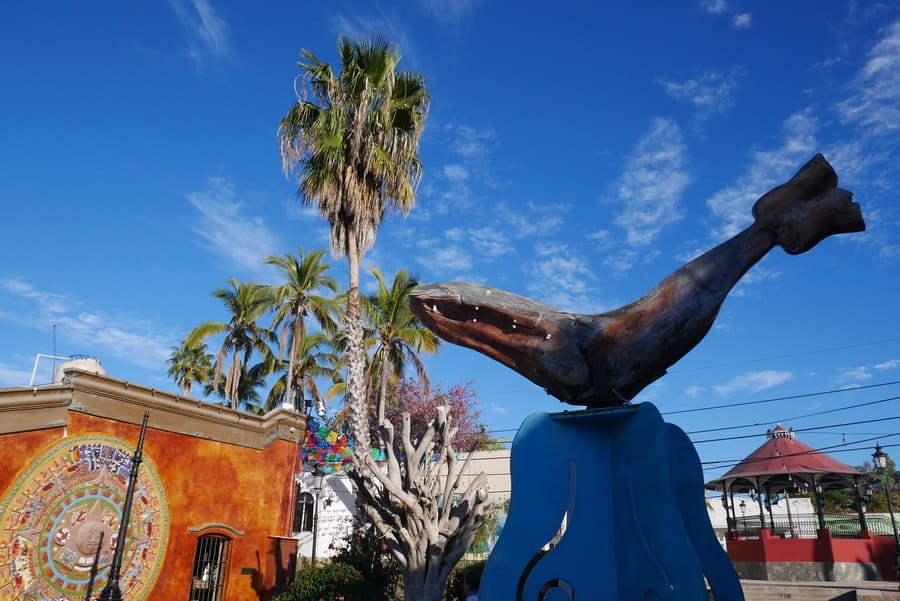
Near Todos Santos, you’ll find a string of beautiful beaches along the Pacific Coast. These beaches boast spectacular sunsets, windswept sands and limited eyesore developments.
-
Todos Santos
Todos Santos is a Pueblo Mágico (Magic Town) nestled among the cactus-dotted mountains of Baja California Sur.
The small community attracts a mix of fishermen, surfers and expat hippies. The dusty streets of its little downtown boast a clutch of sophisticated galleries, colonial buildings, farm-to-table restaurants, and upscale boutiques.
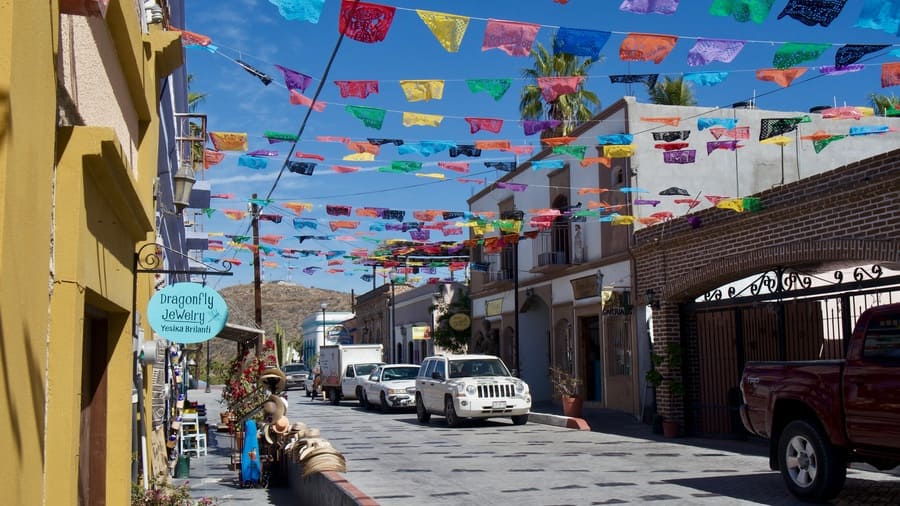
Beyond its picturesque streets, Todos Santos is steeped in history and culture. Originally founded as a mission in 1723, the town later flourished as a sugarcane hub, remnants of which can still be seen in its historic buildings.
Todos Santos has resisted the cookie-cutter developments that plague the landscapes nearby. In this picturesque and artsy community, it is easy to forget that Cabo San Lucas–with its cruise ships and partying tourists–sits only 50 kilometers to the south.
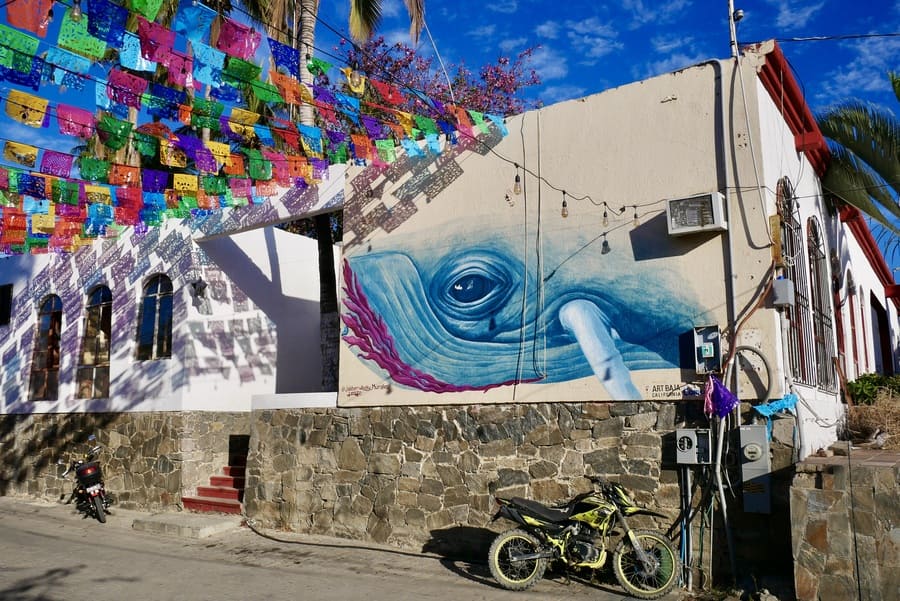
I don’t expect Todos Santos to escape the wave of development indefinitely, however. Resorts and condos are already springing up in the area, and encroaching on the miles and miles of windswept Pacific coastline.
-
Playa Punta Lobos
Playa Punta Lobos, a long windswept beach just outside Todos Santos, boasts golden sand, rugged cliffs, and fiery sunsets.
The beach, named for a colony of sea lions, is clearly marked by an access sign on the highway at kilometer 54. An unpaved road leads through the arid terrain to a small parking area near the Hotel San Cristobal.
While the beach itself is not ideal for swimming due to strong currents, it is a fantastic spot for picnicking, walking, and photography.
The sweeping stretch of sand—framed by cliffs and a lighthouse—remains wild and scenic. Aside from the whitewashed Hotel San Cristobal, it lacks the large-scale development found elsewhere in Baja.
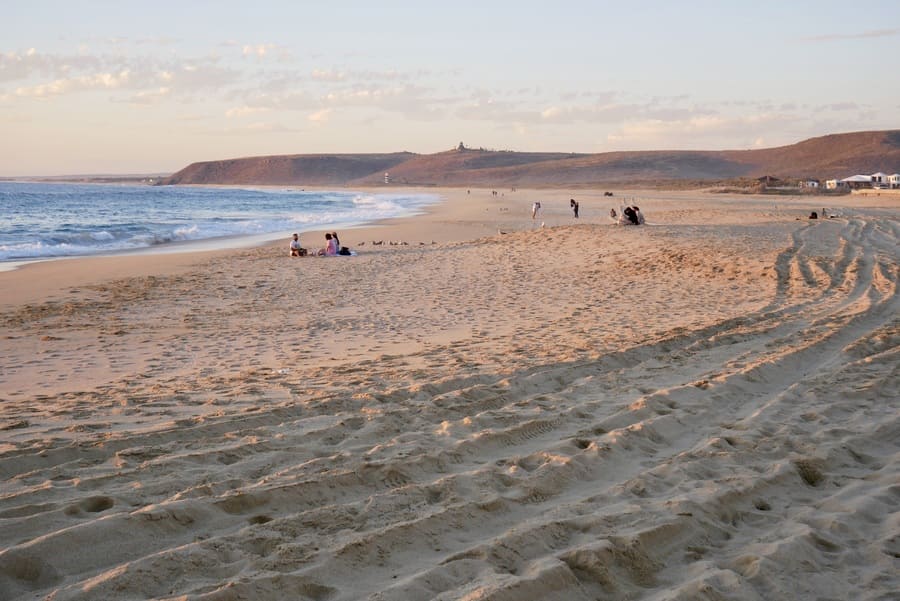
Local fishermen have been using Punta Lobos for decades as a launching point for fishing trips. A cluster of fishing boats sits at the southern end of the beach. Nearby, you’ll find a small chapel where the fishermen pray for a safe trip before setting off to sea.
-
Playa Cerritos
Just a short drive down the Transpeninsular Highway from Todos Santos, you’ll find Playa Cerritos. The turnoff to the beach is at the top of a hill, near kilometer 66.
A beautiful, sweeping expanse of golden sand near Pescadero, the beach feels pristine compared to Playa Médano in Cabo. It reminded me of some of the golden sandy beaches near Sayulita, in Mexico’s Nayarit.
The crescent shores of Playa Cerrito are popular with surfers. The area is safe for swimming too, though it is important to use caution.
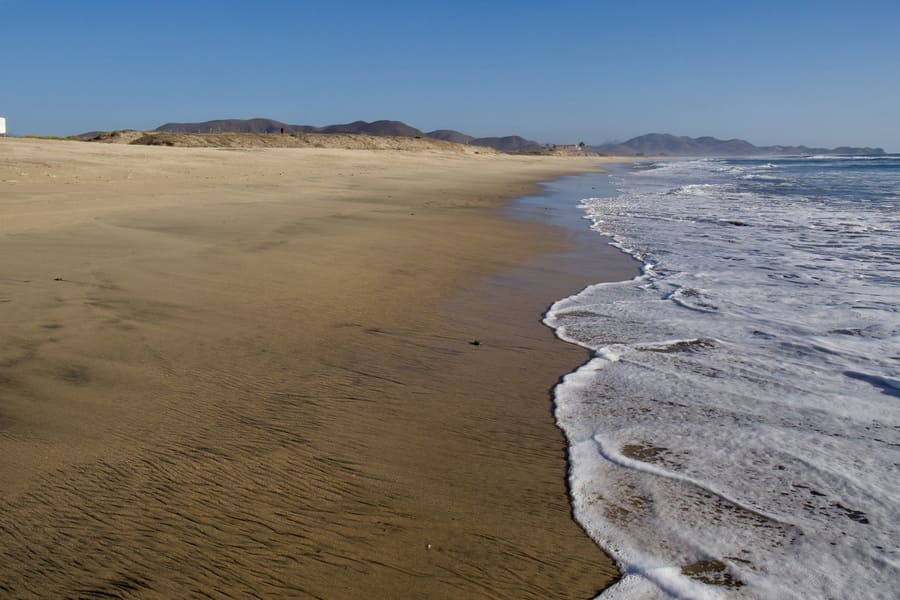
According to Dan’s cousin who lived in Baja a few years back, Playa Cerritos was once a remote outpost, accessible only by a potholed, dusty road.
Today, while it still offers a long and uninterrupted stretch of sand, developments have mushroomed up along its northern end.
As I marveled at Playa Cerritos’ untouched golden shores, I tried to imprint its image in my memory.
Next time I return, I imagine the place will likely be unrecognizable.
Day 4: La Paz and Around
There are plenty of things to do around Los Cabos, but if you don’t mind heading a little bit farther north, you’ll be rewarded with a truly paradisiacal slice of Baja.
La Paz and nearby Balandra Beach are located one hour north of Todos Santos, or two and a half hours from the San José del Cabo Airport.
The area can be visited as part of a Baja road trip, or as a day trip from one of the other towns on the peninsula.
Playa Balandra
Playa Balandra, a stunning crescent of pure white sand, is a jewel along the Sea of Cortez. With turquoise shallow waters and an undeveloped backdrop, it offers a tranquil setting despite its popularity with locals.
Because Playa Balandra is an ecological reserve, it retains an untouched charm that is absent in some other parts of Baja California Sur.
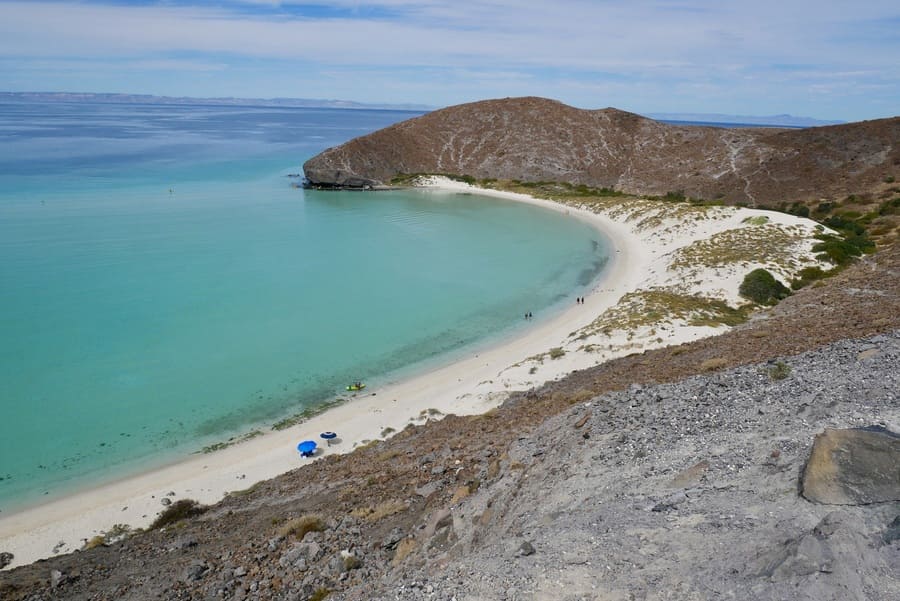
At low tide, the water of Playa Balandra gets so shallow that it exposes ribbons of sand—a beautiful sight from the panoramic viewpoint.
One of Balandra’s most iconic landmarks is the “Hongo de Balandra,” a mushroom-shaped rock formation that has become a popular photo spot.
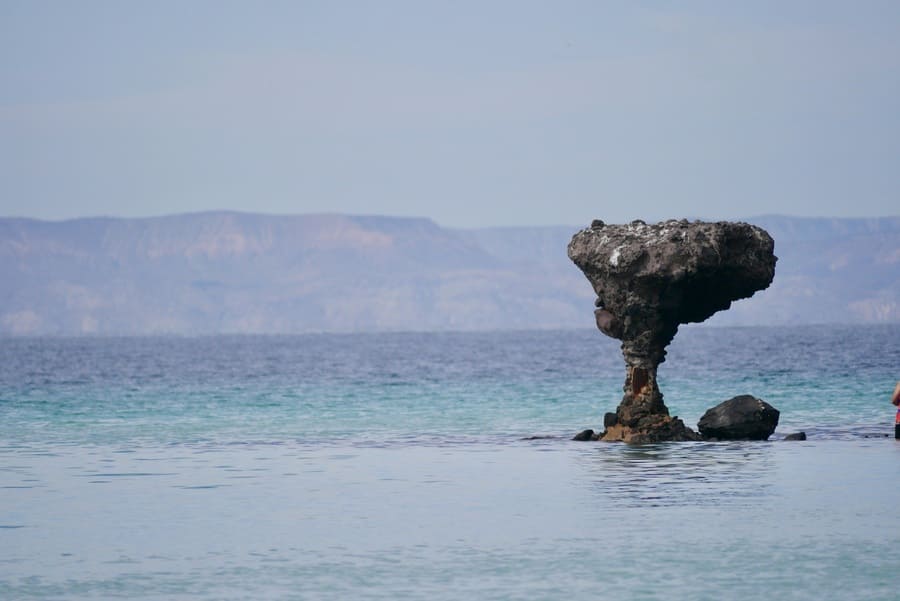
Unlike more commercialized beaches, Balandra lacks large restaurants and hotels. The beach has a limited daily visitor capacity to prevent overcrowding.
There are two entry times: 8:00 AM to noon and 1:00 PM. to 5:00 PM. Capacity during each time slot cannot surpass 450 people, so I recommend you arrive early.
-
Panoramic View of Balandra Beach
The panoramic viewpoint at Balandra Beach showcases two perfect crescents of white sand, a mangrove swamp, and the area’s undulating mountains.
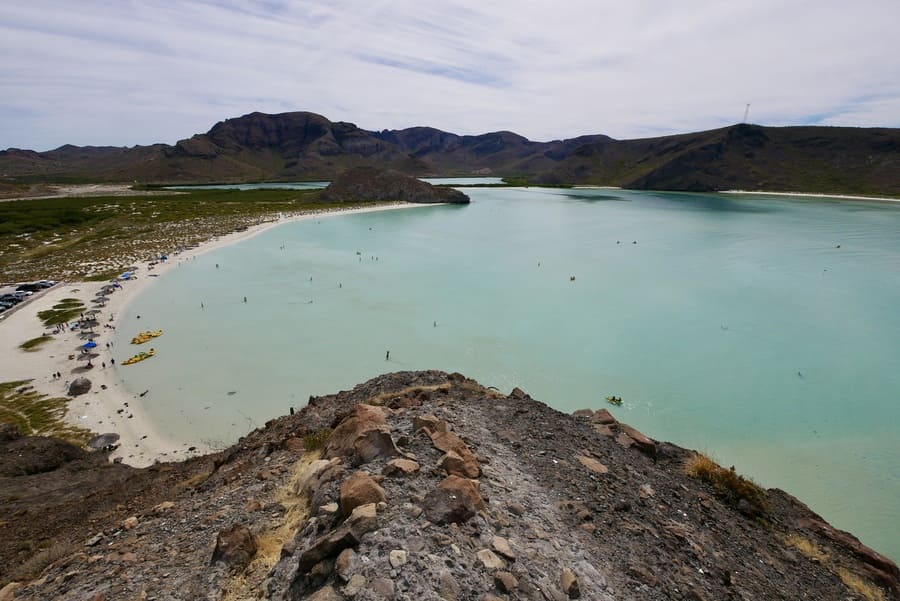
To reach the viewpoint, follow the path on the right side of Balandra Beach, near the parking area.
Though Balandra Beach has strict time limits and wanting to enjoy its warm waters to the fullest extent is certainly understandable, the hike is well worthwhile.
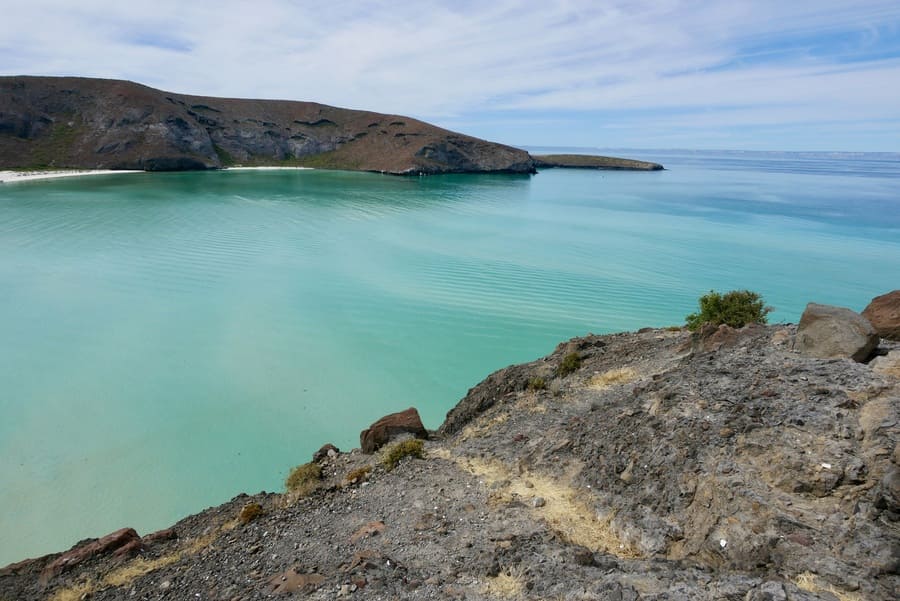
Dan and I took turns soaking in the aerial views from the hilltop hike while the other parent stayed with Elio on the beach.
The views did not disappoint.
-
La Paz Boardwalk
La Paz has a very distinct feel from the twin cities at the peninsula’s southern tip. Though I’m sure it has a sizeable expat community, the city does not feel as though it caters to gringos.
La Paz sits in a beautiful bay along the Sea of Cortez. Its lively malecón is a place where people gather each evening to stroll, exercise, and socialize.
We found the city’s boardwalk to be wonderfully family-friendly, with playgrounds, sandy beaches and statues lining its expanse.
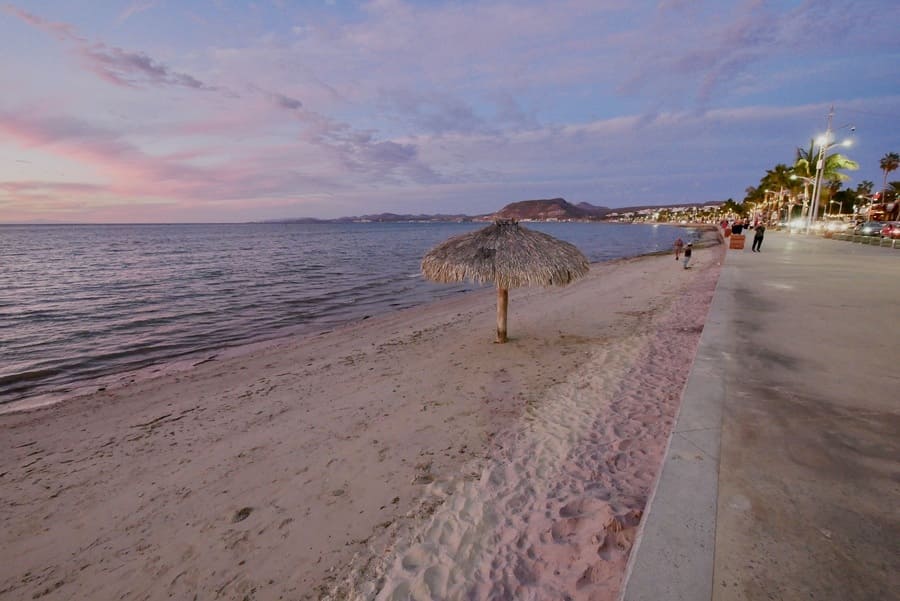
With our evening in La Paz, we strolled the boardwalk, enjoyed a wonderful seafood dinner at a hole-in-the-wall restaurant, and admired the fiery sunset.
Things to Do with Extra Days
Baja California Sur is a Wonderland for beach bums and wildlife enthusiasts. Famous ocean explorer and conservationist Jacques Cousteau once dubbed the Sea of Cortez “the world’s aquarium” due to its thriving marine ecosystem.
So while I haven’t personally been on a wildlife-viewing day tour from La Paz, I’m confident in recommending the excursions to others.
-
Day Trip to Isla Espíritu Santu
Isla Espíritu Santo, a UNESCO World Heritage Site off the coast of La Paz, is an uninhabited island known for its diverse wildlife and crystal-clear waters.
Island tours offer visitors the opportunity to snorkel with sea lions, spot whales and dolphins, kayak around secluded coves, and lounge on pristine white-sand beaches.
-
Swimming with Whale Sharks
The waters off the coast of La Paz offer one of the world’s best opportunities for swimming with whale sharks. The gentle giants are especially plentiful in the Sea of Cortez between the months of November and April.
I would have loved to join a whale shark snorkeling tour, but with limited time and a toddler in tow, we tabled the experience for a future visit.
Where To Stay in Baja California Sur
The cities and towns in Baja Sur all have a distinctly different flair. Cabo San Lucas draws young party-seeking tourists, while San José del Cabo seems to draw a older, more laid back crowd. Meanwhile, Todos Santos and La Paz offer a more local feel, with less emphasis on all-inclusive resorts. Due to their proximity to one another, you can choose to stay in the city that fits your travel style and still visit all the places outlined in this four day Baja itinerary.
-
Cabo San Lucas
Though Cabo San Lucas caters to resort-goers, its varied hotel and guesthouse options ensure that the city has something suitable for everyone—from families traveling to Cabo with kids, to longterm travelers backpacking Mexico and Central America.
Highly-rated options in Cabo include the Mayan Monkey Social Hotel (budget dorm-style) the adults-only Cabo Vista Hotel (midrange) and ME Cabo by Melia (luxury).
-
San José del Cabo
Our friends have a timeshare at the Vidanta on San José del Cabo’s hotel strip. It is a gorgeous property with luxurious pools and beachfront views. And while it is admittedly not the kind of place that Dan and I choose to stay at when we travel, I could certainly see the appeal of staying at a 5 star resort on the strip.
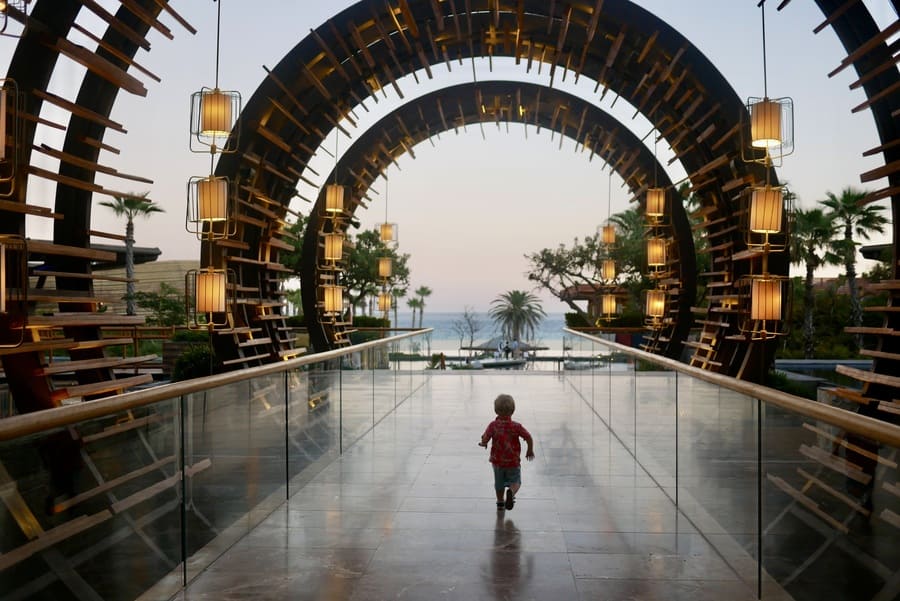
For price-conscious travelers, the Desert Heart Hostel offers clean rooms downtown at an unbeatable price.
If you’re looking for a quieter all-inclusive escape away from the bustle of Cabo San Lucas, then you might want to consider the Hyatt Ziva Los Cabos, one of the best all-inclusive resorts in Mexico.
-
Todos Santos
Dan and Elio and I stayed at the Todos Santos Hostel for a night during our time in Baja. The hostel has a chill vibe and shaded outdoor space with hammocks. It is a five minute walk from the historic center of Todos Santos and a fantastic option for people traveling Mexico on a budget.
Hotel Perro Surfero (midrange) and Todos Santos Boutique Hotel (high end) are other popular options.
-
La Paz
We had a pleasant stay at La Concha Beach Hotel for one night during our visit to the La Paz area. We enjoyed the hotel’s pool, waterside location, and relaxed beach bar.
Options closer to downtown and the La Paz boardwalk include Pension Baja Paradise (budget), Hotel Casa Coronel (midrange) and Casa 1880 (high end).
Getting Around Baja California Sur
Dan and I rented a car from the Cabo Airport during both of our trips to the Baja Peninsula. Driving in Baja proved to be straightforward and convenient.
If renting a car is not an option, ABC Bus travels between Cabo San Lucas and Todos Santos a few times a day. You’ll also find buses that connect Los Cabos Airport with La Paz.
Dan and I were shocked to learn that taxis to and from the airport to Cabo San Lucas cost upwards of $80.
As an alternative to taxis, the Ruta del Desierto Bus runs between Cabo San Lucas, San José del Cabo, and the airport’s Terminal 2. The bus is a great alternative for travelers who want to avoid paying for private shuttle or taxi service.
When to Visit Baja Sur
Peak travel season in Baja Sur falls during the Northern Hemisphere’s winter and spring, from December through April. In high season, whales are at their most active and the weather is generally sunny and warm.
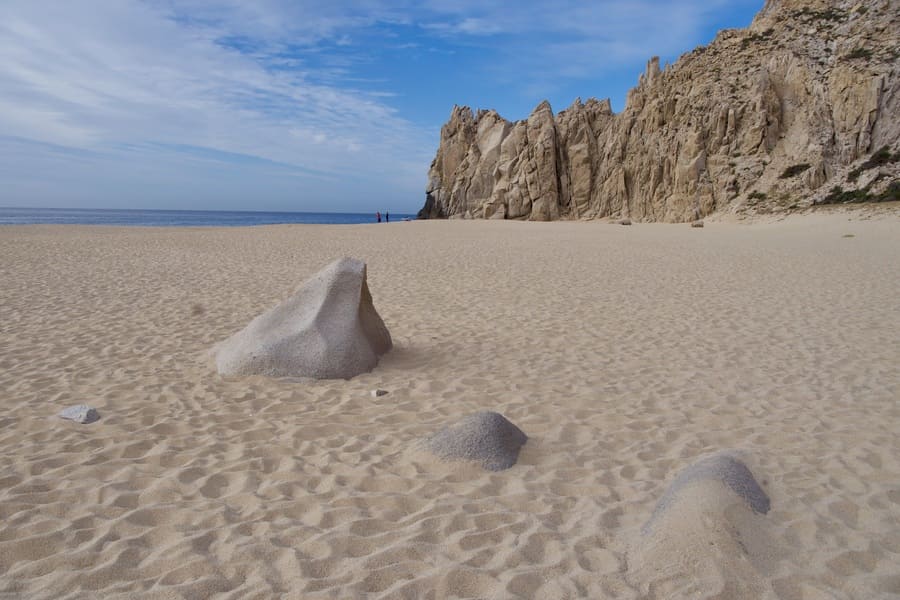
The shoulder season (October, November, May, and June) can also be ideal due to warm, dry weather and lower prices.
****
While many travel to Cabo for the parties, Dan and I were happy to find solitude on the Baja Peninsula.
Our two trips to Baja were proof that, despite the area’s association with oversized resorts and tourists throwing back tequila shots, you don’t have to travel far to encounter pristine, untouched nature.
_______________________________________
Did You Enjoy this Baja California Sur Itinerary? Pin It!
